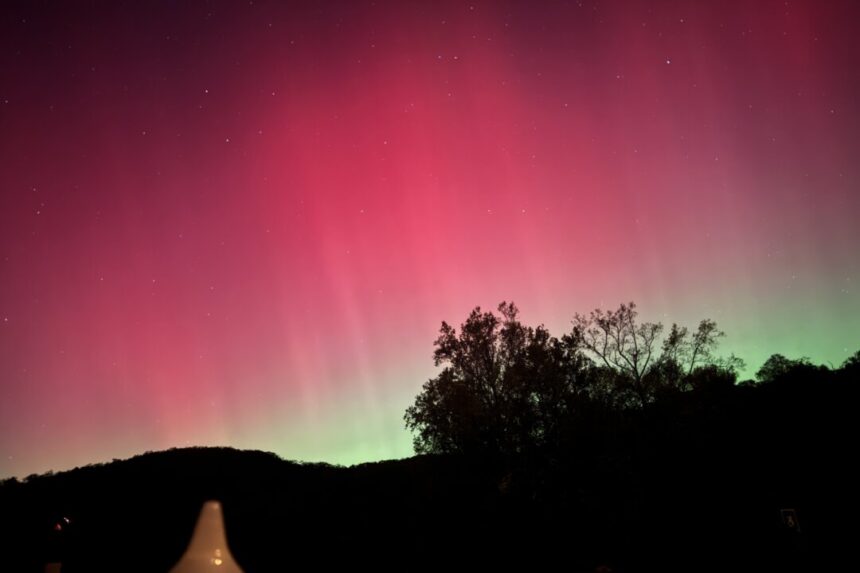According to a forecast from the National Oceanic and Atmospheric Administration (NOAA), several states in the northern U.S. may have the chance to witness the northern lights on Friday night.
The viewing line is projected to stretch as far south as the northern edge of Iowa, but NOAA recommends positioning oneself as far north of this line as possible for better visibility of the lights.
NOAA issued a severe geomagnetic storm watch earlier this week, cautioning that the event could impact critical infrastructure like power grids, GPS, and radio communications, and might make the aurora borealis visible as far south as Alabama on Thursday.
Where Can You See the Northern Lights?
A portion of the northern U.S. is expected to have a higher chance of witnessing the aurora borealis, with Alaska and northern parts of Washington, Idaho, Montana, North Dakota, Minnesota, and Wisconsin being optimal locations. Other states, such as Montana, South Dakota, Iowa, Wisconsin, Michigan, New York, New Hampshire, Vermont, and Maine, have a lower likelihood of seeing the northern lights.
What’s the Best Way to View?
NOAA recommends viewing from a high vantage point, such as a hill, between 10 p.m. and 2 a.m. in areas with minimal light pollution.
Smartphones can capture the aurora, even if it’s not visible to the naked eye. Iceland’s tourism site suggests using night mode to enhance camera exposure.
When Is It Expected to Peak?
Solar Cycle 25, which began in 2019, has heightened the possibility of seeing the aurora borealis due to increased sunspot activity and geomagnetic storms. The cycle is anticipated to peak between late 2024 and early 2026, resulting in more frequent displays of the northern lights. Scientists predict more geomagnetic storms through 2026 due to heightened solar activity.

The northern lights over Highland Ralls, N.Y., on Oct. 10, 2024. Rita Qi/NTD

An aurora borealis tints the sky red and green above the Pontusval lighthouse in Brignogan, North Finistere, France, on Oct. 10 2024. Vincent Feuray/Hans Lucas/AFP via Getty Images

A pink-colored aurora borealis visible in the starry sky at mid-latitudes, over trees and fields in the countryside in Rouans, in Loire-Atlantique, western France, on Oct. 10, 2024. Maylis Rolland, Hans Lucas, Hans Lucas/AFP via Getty Images

Aurora borealis, or northern lights, are seen over Haraldsted Lake near Ringsted, Denmark, on Oct. 10, 2024. Mads Claus Rasmussen, Ritzau Scanpix/AFP via Getty Images

Northern lights over the Baltic Sea close to Kiel, northern Germany, on Oct. 10, 2024. Axel Heimken/AFP via Getty Images

The northern lights over Highland Ralls, N.Y., on Oct. 10, 2024. Rita Qi/NTD
Please rephrase the sentence.
Source link







